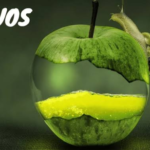Introduction: A Tale of Two Worlds
Imagine a bustling marketplace in ancient Babylon where merchants from distant lands gather to trade exotic goods. Amidst the vibrant chaos, a young scribe named Asha stands her heart pounding with excitement. She holds a precious scroll a message from a faraway kingdom written in a language she does not understand. Asha’s task is to übersetzen this scroll to unlock its secrets and bridge the gap between the two worlds. This ancient practice of translation or übersetzen has been a cornerstone of human communication for millennia enabling the exchange of ideas culture and knowledge across linguistic boundaries.
The Importance of Übersetzen in Today’s World
In our modern interconnected world, the need for übersetzen has never been greater. Whether it’s translating a business proposal a literary masterpiece or a simple conversation the ability to accurately and effectively übersetzen content is crucial. Übersetzen not only facilitates communication but also fosters understanding and empathy among diverse cultures.
The Role of Technology in Übersetzen
With the advent of advanced technology übersetzen has become more accessible and efficient. Tools like Google Translate have revolutionized the way we approach translation offering instant translations of text images and even entire websites1. However while these tools are incredibly useful they are not without limitations. The nuances of language cultural context and idiomatic expressions often require the human touch to ensure accurate and meaningful übersetzen.
Challenges in Übersetzen
Despite technological advancements übersetzen remains a complex and challenging task. Translators must navigate linguistic differences cultural nuances and contextual subtleties to produce translations that are not only accurate but also resonate with the target audience. This requires a deep understanding of both the source and target languages as well as the cultural contexts in which they are used.
Common Pitfalls in Übersetzen
One of the most common pitfalls in übersetzen is the literal translation of words and phrases which can lead to misunderstandings and misinterpretations. For example, idiomatic expressions often lose their meaning when translated word-for-word. A skilled translator must be able to recognize these expressions and find equivalent phrases in the target language that convey the same meaning.
The Future of Übersetzen
As technology continues to evolve the future of übersetzen looks promising. Machine learning and artificial intelligence are poised to further enhance translation tools making them more accurate and context-aware. However, the human element will always be essential in übersetzen as language is inherently tied to human experience and culture.
The Human Touch in Übersetzen
While machines can process vast amounts of data and recognize patterns they cannot understand the emotional and cultural nuances that are integral to effective übersetzen. Human translators bring a level of empathy and cultural insight that machines cannot replicate ensuring that translations are not only accurate but also meaningful and impactful.
Übersetzen Impact of cultural context on translations
Absolutely! Cultural context plays a crucial role in translations as it ensures that the translated content is not only linguistically accurate but also culturally appropriate and meaningful. Here are some key aspects of how cultural context impacts translations:
1. Idiomatic Expressions and Phrases
Idiomatic expressions often carry meanings that are specific to a particular culture. Translating these literally can lead to confusion or misinterpretation. For example, the English phrase “kick the bucket” means to die but a literal translation into another language might not convey the same meaning. A culturally aware translator will find an equivalent expression in the target language that conveys the same idea.
2. Cultural Norms and Etiquette
Different cultures have varying norms and etiquette which can affect how messages are received. For instance, the level of formality politeness, and the use of honorifics can vary significantly. A phrase that is polite in one culture might be considered rude in another if not translated with cultural sensitivity.
3. Humor and Wordplay
Humor is highly culture-specific and often relies on wordplay puns or cultural references. Translating humor requires a deep understanding of both the source and target cultures to ensure that the joke makes sense and is funny in the target language. Sometimes humor needs to be adapted rather than directly translated.
4. Historical and Cultural References
References to historical events literature pop culture or local customs can be challenging to translate. These references might be well-known in the source culture but unfamiliar to the target audience. Translators often need to find equivalent references or provide explanations to ensure the translated content is understood correctly.
5. Taboos and Sensitive Topics
Different cultures have different sensitivities regarding topics like religion politics and personal issues. A translator must be aware of these sensitivities to avoid offending the target audience. This might involve rephrasing or omitting certain content to respect cultural norms.
6. Non-verbal Communication
Non-verbal cues such as gestures and body language can also vary widely between cultures. While these are not directly translated understanding them is essential for translators working with multimedia content such as films or advertisements to ensure that the overall message is conveyed accurately.
Conclusion: The Timeless Art of Übersetzen
From the ancient scribes of Babylon to the modern-day translators using cutting-edge technology the art of übersetzen has been a vital tool in bridging linguistic and cultural divides. As we look to the future the importance of übersetzen will only continue to grow enabling us to connect communicate and understand one another in an increasingly globalized world. Whether through the use of advanced technology or the skilled hands of a human translator übersetzen remains a timeless and essential practice.







